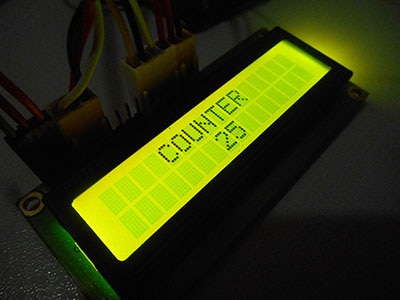LCD Types and Modes
2024-12-16 | By Antonio Velasco
Previously, I talked about LCD/LED displays and how they work. The technology behind them is astounding and can be read about in that blog. Now, I’ll talk about the specific display types and how they work/compare with each other.
Passive and Active Displays
The first classification that is often tossed around is whether or not a display is considered to be a passive or an active type. This refers to how the on-screen pixels are controlled by the matrix of conductors, and whether or not it’s done through passive or active components.
Displays, as explained in the article linked above, utilize a series of electrical signals to turn on/off certain pixels, which are transmitted through electrodes in the display. Light is then shown through to provide a contrast to these pixels.
Passive displays, as the name suggests, use exclusively passive components, and create a matrix of conductors (horizontally and vertically) to turn on/off pixels. Active displays instead utilize thin-film transistors, or TFTs, allowing each pixel to be individually controlled as opposed to each row/column needing to be turned on/off with the passive display. This often results in sharper images and more complex visuals. Shown below is an example of a transistor grid for each pixel.
Typically, passive displays are utilized widely since they tend to be cheaper to produce and control. They also tend to be a bit slower but will suffice for most applications.

Reflective, Transflective, and Transmissive Displays
Reflective, transflective, and transmissive displays are not types of LCDs like passive and active displays, but rather modes for the LCD to depict its pixels. As mentioned previously, LCDs produce a display through the contrast of pixels to light. These LCD modes provide different ways for the display to be illuminated and have specific usage cases in each scenario.

- Transmissive Mode
The transmissive mode tends to be the most popular and is what I described as an example in my previous LCD blog. This mode utilizes a light source, such as a backlight, behind the liquid crystal layer. The liquid crystal layer creates pixels, or black spots, which contrast to the light being shown through. As such, a display can be seen and is easily made out in most settings. Something you might have noticed with some LCDs is that it’s very hard to see in direct sunlight—this is because, for LCDs, the picture or image you’re seeing is the result of an absence of light. An abundant amount of light removes this contrast, and thus the picture altogether. Conversely, this is most effective in darker settings, allowing the contrast to be stark.
- Reflective Mode
The reflective mode, instead of a light source behind the liquid crystal layer, utilizes a mirror. This is the solution to the problem that the transmissive mode has (that the backlight and any sunlight remove the contrast of the dark pixels). This allows the user to view it in direct sunlight or any bright areas. In addition to being useful in bright settings, it is also the most energy efficient (since you don’t need to provide energy for illumination). An example of this is the common digital watch, which typically uses a reflective mode for its purposes.
- Transflective Mode
The transflective mode is essentially a combination of the two. The transflective mode incorporates the reflective portion, including a translucent mirror that will reflect most light, along with the transmissive portion, fixing a backlight behind the translucent mirror and liquid crystal layer. This allows the LCD to consume less energy during the daytime when the reflective layer provides more than enough reflected light, while still providing the option for nighttime usage with the backlight. Simply put, it combines the best of both worlds but can be hard to manufacture due to the unique property of a layer that is only partially reflective and partially translucent for the backlight.
Although it might seem very simple to focus on the better types of LCDs (active types with transflective modes), all of them and their modes are still manufactured today due to the niches that they fill. Active LCDs with a transflective mode, while superior, are difficult and more costly to manufacture. Most times, companies opt for what is only necessary in order to cut costs and remain competitive. Transmissive LCDs are still widely used in indoor electronics, and reflective LCDs are primarily used in digital road signs (especially with car lights shining at them). It’s important to keep a variety of technologies on hand to ensure the most effective and efficient solutions.
















